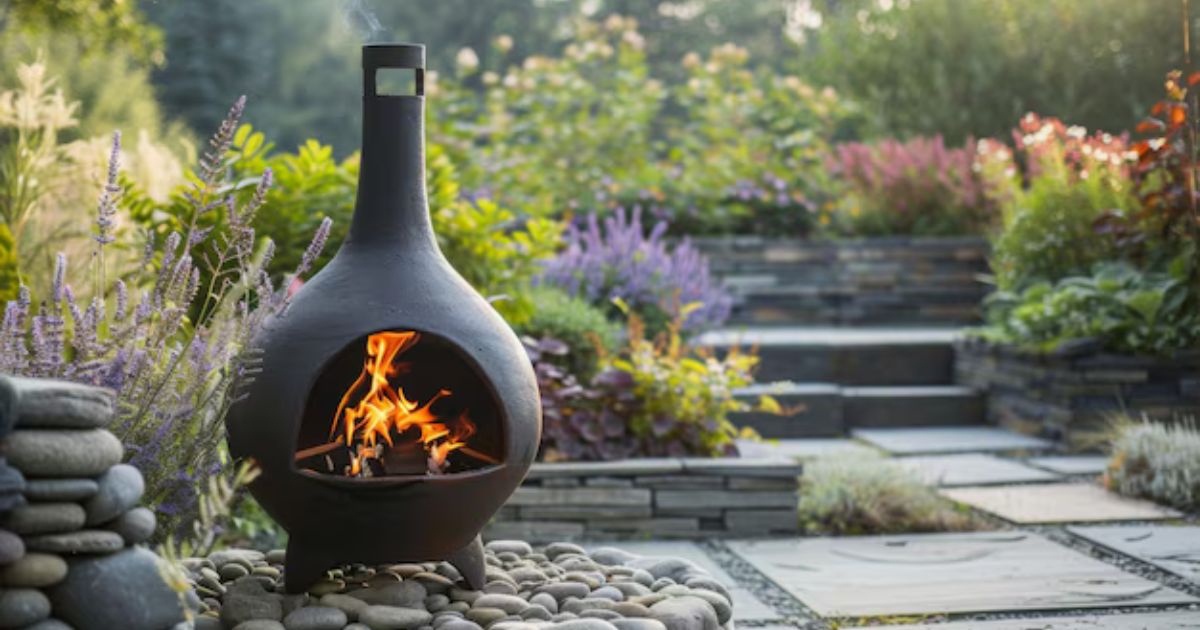A chiminea, an outdoor fireplace traditionally made of clay or metal, has become a beloved addition to patios and gardens. Whether you’re hosting an outdoor gathering or simply relaxing with a book, chimineas offer both warmth and aesthetic appeal. In this article, we’ll explore what makes chimineas so special, their history, and why they are a fantastic investment for your outdoor space.
What is a Chiminea?
A chimine’a is an outdoor fireplace, typically crafted from clay or metal, designed to funnel smoke through a vertical chimney. The fire is built in a rounded base, and the chimney helps direct smoke upwards. This design not only makes chimineas functional but also stylish, adding a rustic charm to outdoor spaces.
The History of Chimine’a
The origins of chimineas can be traced back over 400 years to Mexico, where they were initially used for both heating and cooking. Crafted from clay, early chimineas were a common fixture in homes, providing warmth during the cool evenings and serving as an oven for baking bread and other dishes. Over time, their design has evolved, but they remain rooted in tradition.
Materials Used in Chimineas
Chimineas are primarily made from two materials: clay and metal. Each has its advantages and offers different aesthetic and functional benefits.
- Clay Chiminea: Known for its traditional look, a clay chiminea provides an authentic, rustic feel. The clay absorbs heat and radiates it efficiently, making it perfect for those cooler nights. However, clay chimineas are fragile and may crack if exposed to extreme temperature changes.
- Metal Chiminea: Usually made from cast iron or steel, metal chimineas are more durable and can withstand harsher weather conditions. They also heat up faster than clay but retain heat for a shorter period. Metal chimineas often come with decorative designs, adding a touch of elegance to your outdoor area.
How Does a Chiminea Work?
A chiminea operates on a straightforward principle: air is drawn into the fire chamber, and the smoke exits through the chimney. This design makes it incredibly efficient at burning wood, producing less smoke than a traditional fire pit. Because of the enclosed nature of the fire, chimineas are also safer, reducing the risk of stray sparks flying into the surrounding area.
Benefits of Having a Chiminea
There are numerous benefits to adding a chiminea to your backyard or patio.
- Provides Warmth: One of the primary reasons people invest in a chiminea is to provide warmth during outdoor activities. Unlike open fire pits, chimineas focus the heat in one direction, making them ideal for keeping people cozy.
- Aesthetic Appeal: A chiminea adds a rustic, traditional, or even modern touch depending on the design and material. It’s not just a functional piece but also a decorative one that enhances the visual appeal of your outdoor space.
- Versatility: Many chimineas can also double as outdoor ovens. You can roast marshmallows, bake pizzas, or grill small items, making them more than just a heating solution.
- Safety: Compared to open fire pits, chimineas are safer due to their enclosed design. The chimney directs the smoke upwards, and the fire is more contained, reducing the risk of accidents.
Choosing the Right Chiminea for Your Space
When selecting a chiminea, several factors should be considered to ensure you make the right choice for your needs.
- Size: Consider how large your outdoor space is. A smaller chiminea may suffice for intimate gatherings, while a larger one may be better suited for bigger spaces or larger groups.
- Material: If you live in a region with fluctuating weather conditions, a metal chiminea might be the better choice due to its durability. However, if you want a traditional, authentic look, a clay chiminea can add that rustic charm.
- Design: From modern sleek designs to traditional rustic looks, chimineas come in various styles to match your personal taste and outdoor décor.
How to Safely Use a Chiminea
While chimineas are relatively safe, following a few guidelines will ensure a secure and enjoyable experience.
- Placement: Always place your chiminea on a fire-resistant surface such as stone or brick. Avoid placing it on wooden decks or grass, as the heat could cause damage or pose a fire hazard.
- Fuel: Only burn seasoned hardwoods, which produce less smoke and ash. Avoid using softwoods, treated wood, or other materials that could produce harmful fumes or excessive smoke.
- Cover: Use a protective cover when your chiminea is not in use, especially if it’s made of clay. This will protect it from moisture, which can weaken the material and cause cracks.
Maintenance Tips for Your Chiminea
Proper maintenance can extend the life of your chiminea, ensuring it remains a focal point of your outdoor space for years to come.
- Cleaning: Regularly clean the inside of the chiminea to remove ash buildup, which can block airflow and reduce the efficiency of the fire.
- Sealing: If you own a clay chiminea, it’s essential to apply a sealant every few months to prevent moisture from seeping into the clay and causing it to crack.
- Rust Prevention: Metal chimineas are prone to rust over time. To prevent this, cover them when not in use and apply a heat-resistant paint or rust inhibitor as needed.
Chiminea vs. Fire Pit: Which is Better?
Both chimineas and fire pits have their advantages, but it ultimately comes down to personal preference.
- Chiminea: Offers a more contained fire, making it safer and more efficient in terms of heat output. Its vertical chimney design directs smoke upwards, which is beneficial in small outdoor spaces.
- Fire Pit: Provides a 360-degree fire, making it a great centerpiece for gatherings. However, fire pits can produce more smoke, and they lack the safety features of a chiminea.
Popular Chiminea Designs
There are various chiminea designs available, from modern and sleek to traditional and ornate. Some popular styles include:
- Southwestern: Inspired by the original Mexican design, these chimineas often feature earthy tones and intricate patterns.
- Modern Minimalist: These chimineas are made from metal and have a sleek, streamlined appearance, perfect for contemporary spaces.
- Rustic: With a rough, textured finish, rustic chimineas provide an old-world charm, ideal for cottage or country-style gardens.
Conclusion
A chiminea is more than just a heating solution; it’s a functional and decorative piece that can elevate the ambiance of any outdoor space. Whether you choose a traditional clay chiminea or a durable metal one, the warmth, style, and versatility it brings to your garden or patio make it a worthwhile investment.
FAQs
Can a chiminea be used in winter?
Yes, chimineas can be used in winter, provided they are protected from moisture and you use appropriate fuel like seasoned hardwood.
How long does a chiminea last?
With proper care and maintenance, a chiminea can last several years. Metal chimineas tend to last longer than clay ones due to their durability.
Can I cook on a chiminea?
Yes, many chimineas can double as outdoor ovens. You can grill, roast, or even bake small items, adding to their versatility.
Do chimineas produce a lot of smoke?
Chimineas produce less smoke than traditional fire pits due to their chimney design, which directs smoke upwards.
Are clay chimineas better than metal?
Both have their benefits. Clay chimineas offer a more traditional, rustic look but are fragile. Metal chimineas are more durable and heat up faster but may not retain heat as long as clay ones.











